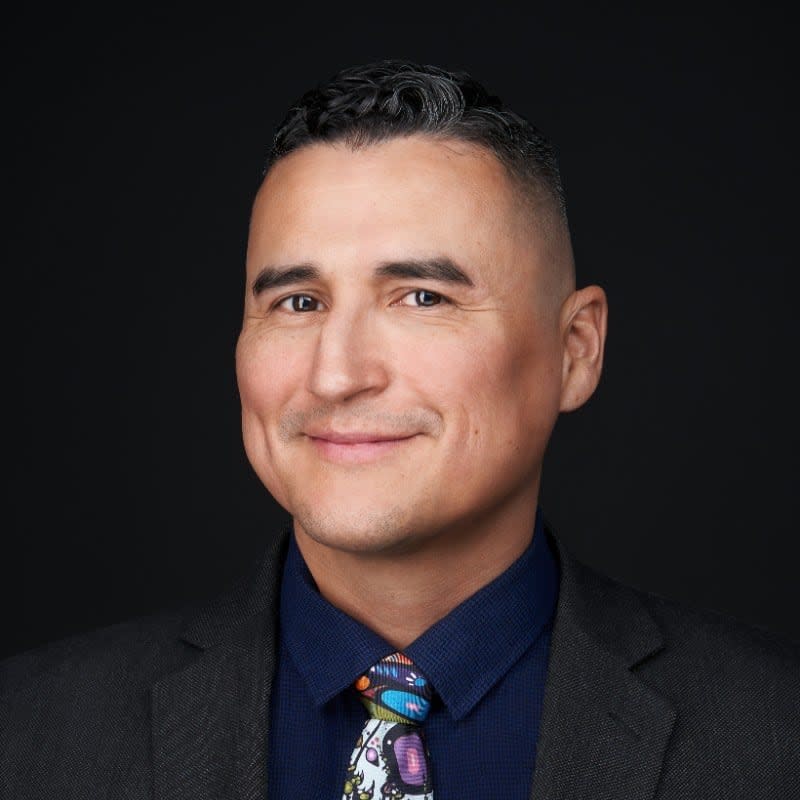Youth leaders demand in a new report that climate protection measures and policies must be supported by indigenous peoples

Indigenous communities are 18 times more likely to be evacuated due to climate emergencies, so actions and strategies must be led by Indigenous peoples, says a new report from Deloitte Canada.
The consulting firm surveyed indigenous youth across the country to find out what kind of climate action and policies they want.
The report states that Canada’s indigenous people are excluded from decision-making processes regarding land and resource management, as well as climate change mitigation and adaptation measures.
At the same time, they are disproportionately affected by “climate and environmental changes that threaten their physical well-being and the survival of their spiritual and cultural practices,” the report says.
The report, released Tuesday, is the fourth in a series called “Voices of Indigenous Youth Leaders on Reconciliation,” an initiative of Deloitte’s Future of Canada Centre and Indigenous Youth Roots, known until last year as the Canadian Roots Exchange.
Among other things, the report calls for indigenous leaders to be given the opportunity to participate meaningfully in environmental policy decisions and for governments to move towards “more conscientious” land management under the leadership of indigenous peoples.
Toronto resident Siera Hancharyk decided to take part in the survey because she suffers from climate anxiety and is concerned about what the environment will be left for future generations.
“Will we have clean air to breathe? Will we have clean drinking water?” Hancharyk said in an interview with CBC.
“I worry about what we are leaving for our children. I have a six-year-old and I am so worried about what we are leaving for him – it scares me.”


Siera Hancharyk of Wikwemikong First Nation in Ontario says she has seen changes on her community’s land due to climate change. (Submitted by Siera Hancharyk)
Hancharyk said she has clearly seen the impacts of climate change on the lands of her home community of Wikwemikong First Nation, 350 kilometres northwest of Toronto.
“What I personally noticed is the birch bark. We can no longer cut as good slices from the trees as we used to and have to harvest more trees than (we used to),” Hancharyk said.
She said the bark used to make canoes and jewelry was drier because of the drought and the trees were increasingly susceptible to disease and fungal infections.
She said animal diseases were also increasing in the region and that the waters of Lake Huron were also being affected.
“The water in the area where we used to swim as children is getting pretty polluted… I don’t even like swimming at the beach when I get home anymore.”
Mitch Mercredi, director of nation building at Deloitte Canada, has experienced the impacts of climate change on water in his community, the Athabasca Chipewyan First Nation in northeastern Alberta.
“I’ve seen pictures and heard stories from elders … about how the water level used to be higher and is now much lower,” Mercredi said.
“This has had a major impact on the climate there. Animals that used to be closer started moving away because the water is … shallow.”
Climate change hits indigenous communities harder
According to Deloitte, First Nations lands are more vulnerable to climate change-related environmental disasters such as floods, wildfires and droughts.
“Studies show that indigenous peoples living on reserves are 18 times more likely to be evacuated due to climate emergencies and disasters than other communities,” Mercredi said.


Mitch Mercredi, director of nation building at Deloitte Canada, says the report shows how Indigenous youth should be part of climate action and policy. (Submitted by Mitch Mercredi)
He also pointed out that 81 percent of First Nations lands are at risk of flooding.
Mercredi said this was largely due to “environmental racism,” which he describes as “the proximity of waste and industrial facilities to many indigenous communities.”
For Hancharyk, the events at the Grassy Narrows First Nation in Ontario are one of the clearest examples of environmental racism.
“These are lands that were imposed and given to them by the so-called Crown, and yet they are still trying to take away what little land we have left to exploit all the resources they can get without … the proper (permission),” she said.
Pollution from a nearby paper mill has led to high mercury levels in the English-Wabigoon river system used by the First Nation.
According to Hancharyk, the community had not approved the mill and members had not been informed about the potential threat to the water.
Incorporating indigenous knowledge into climate protection
Young people who participated in the Deloitte survey told researchers that climate action and policy depend on the traditional knowledge of indigenous peoples.
“Governments, businesses, universities and research institutions should recognize the traditional knowledge and experiences of indigenous peoples as just as indispensable as Western approaches,” said Mercredi.
“Many of our Indigenous knowledge keepers have lived on the land all their lives, they are able to recognise patterns in the environment, they can recognise the movements of animals… they know what is happening out in the field simply because they… live on the land.”
However, he said they were not treated as experts because “they may not have a degree or may not want to go to a Westernized school and therefore their opinion is not … valuable.”
Mercredi said governments and indigenous groups are now beginning to take into account the traditional knowledge of indigenous peoples by bringing knowledge bearers onto the land, but he said more can be done.
Hancharyk said that the knowledge and science of indigenous peoples helped their ancestors survive over the years.
“For years we survived … without disease, we survived without major famines, we survived by living in harmony with the land,” Hancharyk said.
“We had our own farming system. Look at the ‘three sisters’ – we planted pumpkins, corn and beans, and everything fit together so we had a clear view of everything,” she said.
“It wasn’t just Westernized science, it was indigenous science.”
As a child, Hancharyk learned the teachings of the Seven Grandfathers, including humility. In the context of climate action, that refers to the humility to listen to others and work with them, she said.
She said she tends to see the world “through rose-colored glasses” and remains optimistic, especially because she has seen how open climate activists are to working with indigenous peoples.
“The most important mission I live by is that non-Indigenous people can teach me so much and I can teach non-Indigenous people so much,” Hancharyk said.
“I really hope that together we can leave a beautiful future for our children.”



